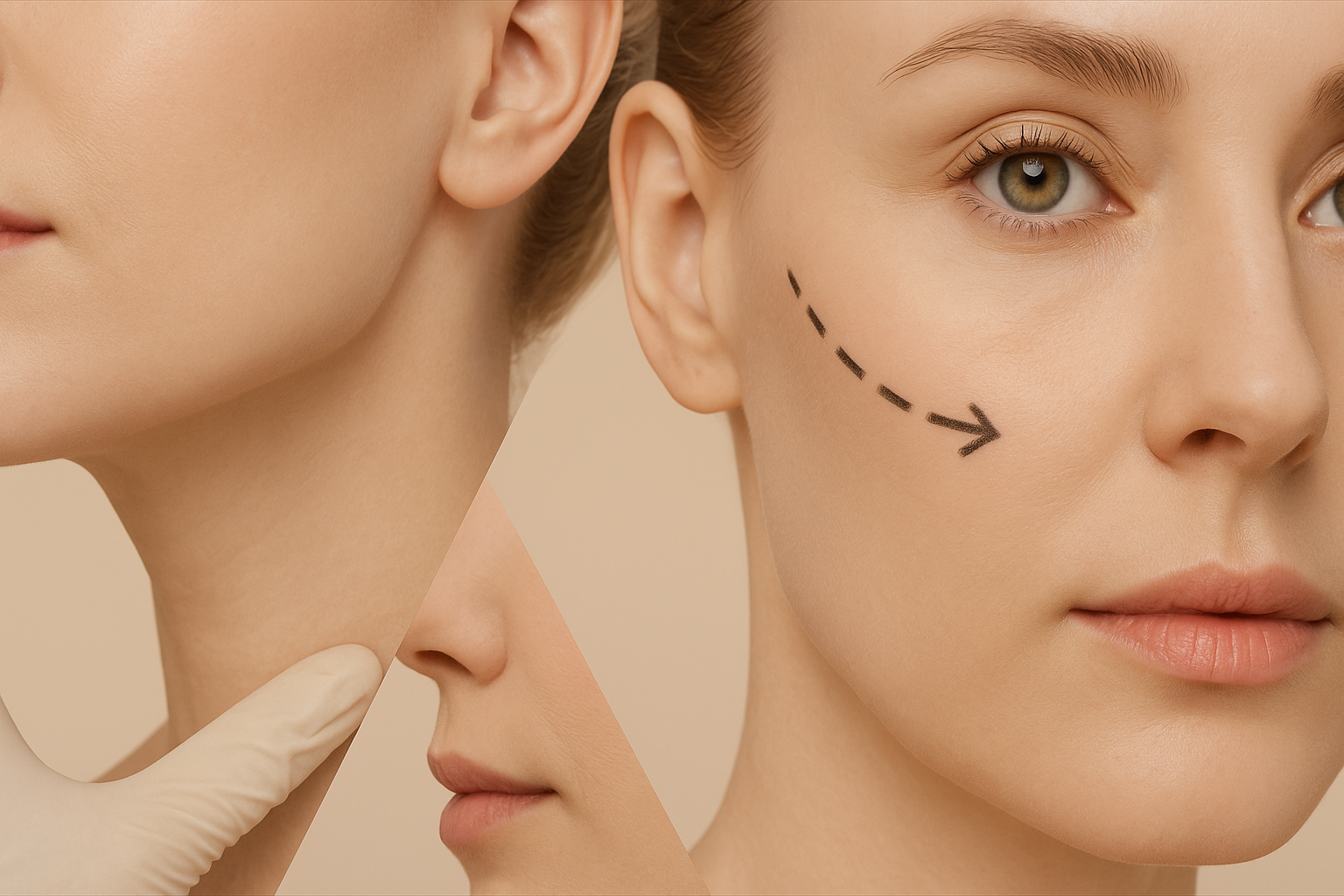
My aim in neck lift surgery is to restore the cervicomental angle by addressing skin, fat, and the platysma in an anatomically respectful manner. In selected patients, a combined plan provides a more harmonious and natural transition between the face and neck.
This page is educational and not a substitute for medical advice. Planning and candidacy require an in-person examination. For general information, see the service page: Neck Lift.
Why combine procedures?
The lower face and neck function as a unit. Treating the neck alone while leaving mid-face descent, volume loss, or weak chin projection unaddressed can look unbalanced. A combined approach seeks continuity across the upper, mid, and lower face so that rejuvenation remains subtle and proportionate.
Facelift (Lower Face/SMAS) with Neck Lift
When? In patients with jowling, marionette lines, and mid-face descent where a neck-only procedure would not sufficiently define the jawline.
How they complement: While the neck lift manages the platysma and (when indicated) subplatysmal fat, a facelift supports the lower face through SMAS or deep-plane mobilization. This reinforces jawline definition and smooth neck-to-face transition.
Recovery: Social downtime commonly ~10–14 days. Incisions are hidden around the ear and hairline.
Eyelid Surgery (Blepharoplasty) with Neck Lift
When? Upper eyelid skin excess or lower-lid puffiness can make the face look tired even if the neck and jawline are improved. In appropriate candidates, addressing eyelids helps maintain facial harmony.
Technical note: Upper lids focus on skin redundancy; lower lids may involve fat pad repositioning or conservative removal. The goal is a natural gaze, not a change in eye shape.
Recovery: Periorbital bruising typically recedes within 7–10 days. Follow-ups are coordinated with the neck lift schedule.
Fat Grafting (Autologous Fat Transfer)
When? Volume loss in the jawline, chin, or cheeks may soften contours. Fat transfer can restore gentle support so the neck lift results look cohesive rather than overly sharp.
Technical note: Micro- or nano-fat is layered in small aliquots at various depths for smooth transitions. Early swelling is expected; a portion of fat resorbs, while the remainder integrates.
Chin Support (Implant or Fat)
When? Insufficient chin projection can limit neck definition. In suitable candidates, chin augmentation improves the cervicomental angle and enhances balance across the lower face.
Planning: Sequencing, Duration, and Safety
- Single-session vs. staged: Determined by health status, operative time, and tissue needs. Safety takes priority for long combinations.
- Incision strategy: Facial and neck incisions follow natural creases while preserving vascularity.
- Hemostasis & drains: Careful bleeding control; selective drain use can reduce hematoma risk.
- Recovery plan: Compression, head elevation, scar care, and scheduled check-ins are coordinated across procedures.
Recovery: A Brief Timeline
- First 48–72 hours: Swelling/tightness expected; cold compresses and head elevation are helpful.
- Days 5–7: Suture removal or spontaneous dissolution depending on materials.
- Week 1–2: Social return for most patients; bruising markedly improves.
- Weeks 4–6: Gradual exercise resumption; continue scar care and sun protection.
- Weeks to months: Final contours and volume settle as swelling resolves.
Quick FAQs
Does combining procedures prolong recovery?
Early swelling can be slightly higher, but addressing multiple concerns under a single anesthesia often streamlines overall downtime.
Will results look natural?
The plan prioritizes balance. Volume is added conservatively to maintain soft transitions and avoid an artificial appearance.
Is every combination suitable for all patients?
No. Age, skin quality, platysma status, fat distribution, and chin projection vary. The approach is individualized after examination.
